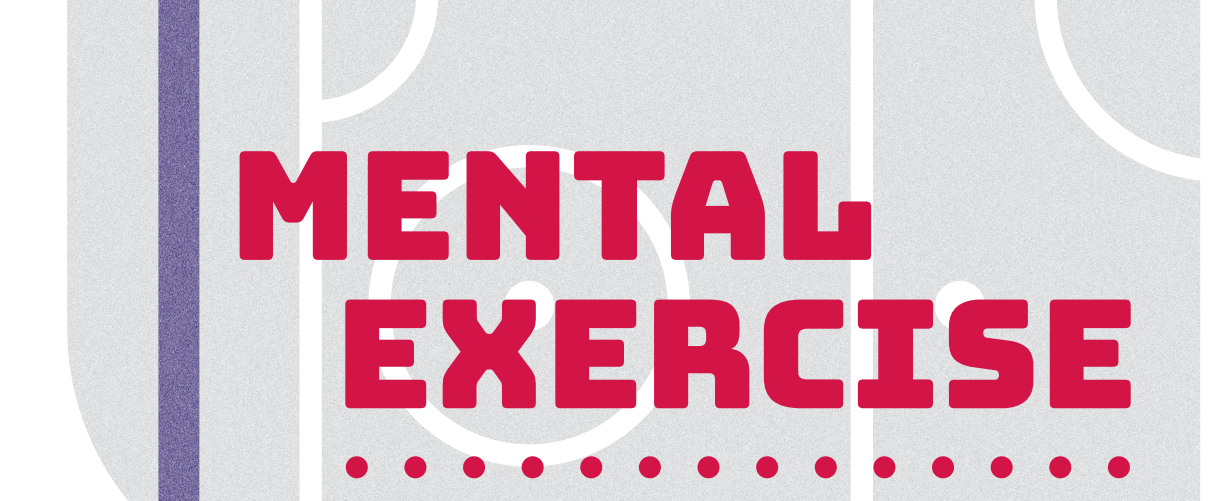
By Jonathan Briggs, Director of Strategy, Technology, and Innovation
Evidence supports that “AHA” moments result from a series of small ideas that gradually accrue over time. It only feels like a sudden burst of insight; however, that doesn’t make for a good story, which brings me to my ninth-grade hockey team.
Ice time is precious, and our coach, who was also my academic advisor, had a minute-by-minute agenda for practice, including all the wind sprints that we would be doing at the end of practice. Coach John asserted that the only purpose of sprinting was to increase our own athletic capacity in both speed and endurance. The intentionality of the sprints, my emerging maturity, and the way the coach explained the purpose of sprinting coalesced in changing my approach to post-practice sprinting. From that point forward, I saw wind sprints as something to put all of my remaining effort into. They no longer felt like an arbitrary to-do item at the end of practice.
The thing about wind sprints is that it is very difficult to tell whether a player is running them at 95% or pushing themselves to 100%. Only the player has the ability to feel whether they are at the edge of what they can do and only the latter improves your capacity. Objectively, sprinting at 100% does not feel good. You are winded, sore, and tired afterward. There is a tangible benefit, but it is far off into the future and requires some trust that it will materialize.
As time progressed, these objectively bad physiological effects (being winded, sore, and tired) transformed into evidence of success, and my mental relationship with those feelings was forever changed.
I imagine that prior to the automobile, the concept of being in shape or out of shape was not talked about. In your normal day-to-day life, you were exercising just by going about your business. As the world became more and more mechanically assisted by electricity and automobiles, that concept began to emerge as it was possible to choose to avoid physical labor.
There is evidence that society is moving to a point where we can avoid mental labor as well. There is a distinction to be made between mental labor (deep thinking on a particular domain) and mental load, which is tracking an ever-expanding list of things to remember and worry about. Mental load, which we will not be addressing in this article, seems to be increasing.
Ethan Mollick, in his article, “The Homework Apocalypse,” notes a Rutgers study that showed that in 2008, completing homework improved 86% of student’s test scores but only 45% of scores improved in 2017. Mollick argues that this is due to the ease of looking up answers on the internet. This has only become easier since 2017, and this is before we even begin to address the possibility of AI assistance with homework, which exacerbates the problem.
WE MUST EXPLICITLY ADDRESS THE MENTAL AND EMOTIONAL EXPERIENCES OF DEEP THINKING WITH OUR STUDENTS.
As I argued in “Proxies and Crutches,” from the last issue of Inspire, the manner in which we do work becomes an increasingly important thing to talk about as the tools available increase in sophistication. I would like to expand on that concept here in that we also need to teach students to look for the markers of learning new things.
Like the wind sprint example, only students know the manner in which they completed their assigned work. This is even more difficult to assess than wind sprint effort in that work often happens outside of view of the teacher. Even when it is in full view, the effort and strain we are experiencing is entirely encased within our skull.
What are we to do about this conundrum? Cognitive dissonance plays a crucial role here. When we encounter information that conflicts with our existing beliefs, it generates a sense of discomfort that drives us to resolve the inconsistency. This process can spark curiosity, pushing us to explore further and deepen our understanding. Just like the physical discomfort from wind sprints leads to physical growth, the mental discomfort from cognitive dissonance can lead to intellectual growth.
Moreover, the frustration of learning often stems from uncovering how much more there is to learn. This is akin to the Dunning-Kruger effect, where initial learning gives a false sense of mastery, only for deeper exploration to reveal the true complexity of the subject. Embracing this frustration as a natural part of the learning process can help students push through to achieve deeper understanding.
Finally, the application of new learning can lead to a state of flow, as described by Mihaly Csikszentmihalyi. This is a state where individuals are fully immersed and engaged in their task, finding it both challenging and rewarding. Achieving flow requires both effort and the overcoming of obstacles, much like the sustained effort needed to improve through wind sprints.
We must explicitly address the mental and emotional experiences of deep thinking with our students. Recognizing and valuing the discomfort associated with cognitive dissonance, the humbling journey of pushing through the frustrations of learning, and the rewarding state of flow can transform how students approach their education. This progression of learning is essential as we enter an era where we must consciously keep ourselves mentally in shape because there are more and more tools available that allow us to avoid thinking deeply.
WHEN WE ENCOUNTER INFORMATION THAT CONFLICTS WITH OUR EXISTING BELIEFS, IT GENERATES A SENSE OF DISCOMFORT THAT DRIVES US TO RESOLVE THE INCONSISTENCY. THIS PROCESS CAN SPARK CURIOSITY, PUSHING US TO EXPLORE FURTHER AND DEEPEN OUR UNDERSTANDING.
